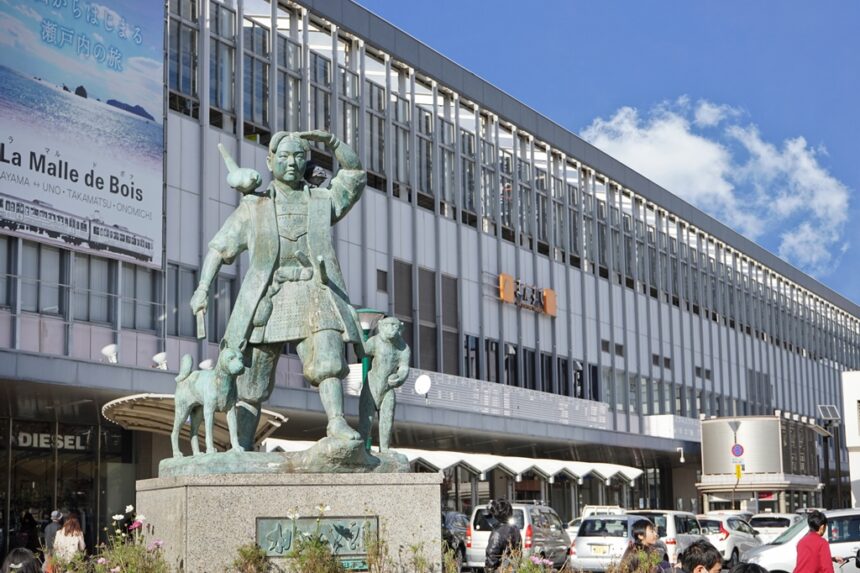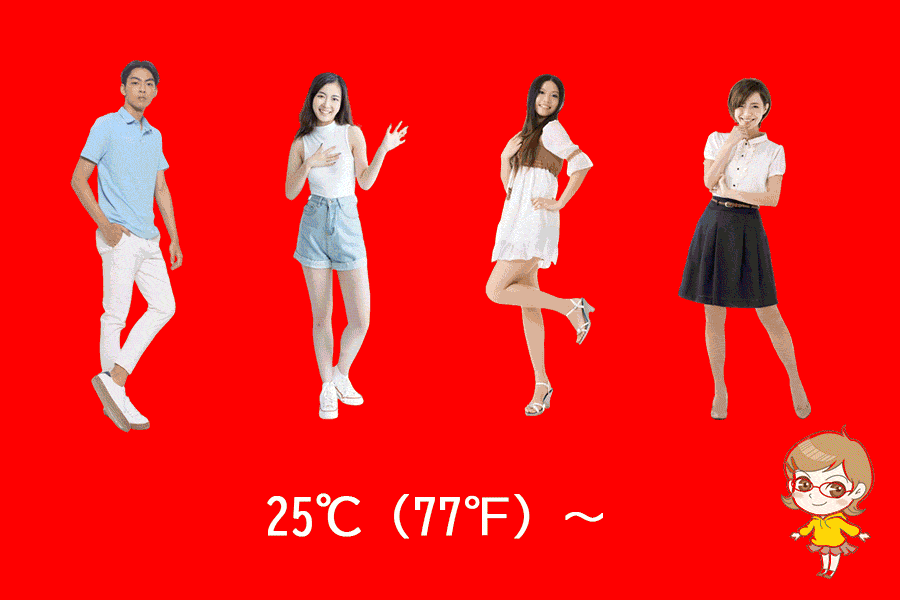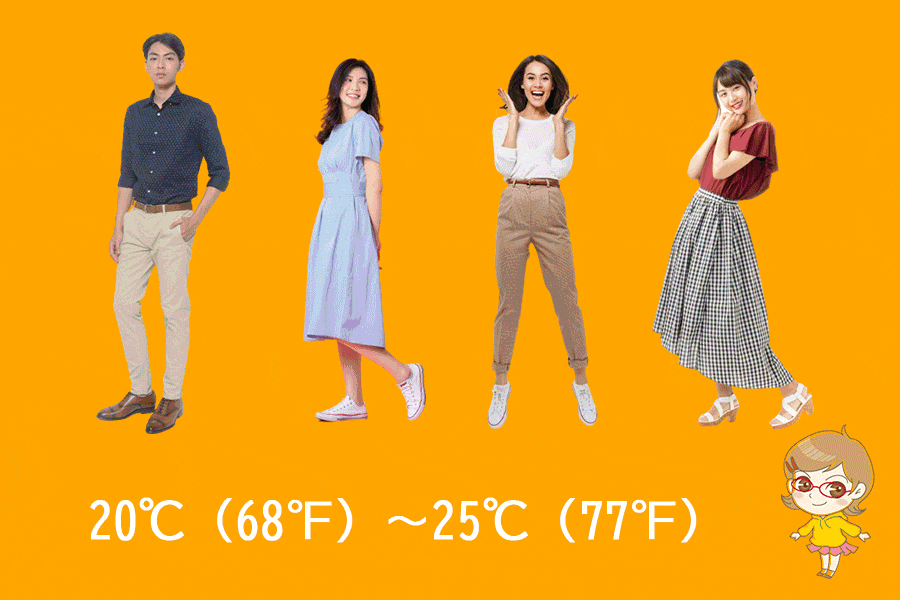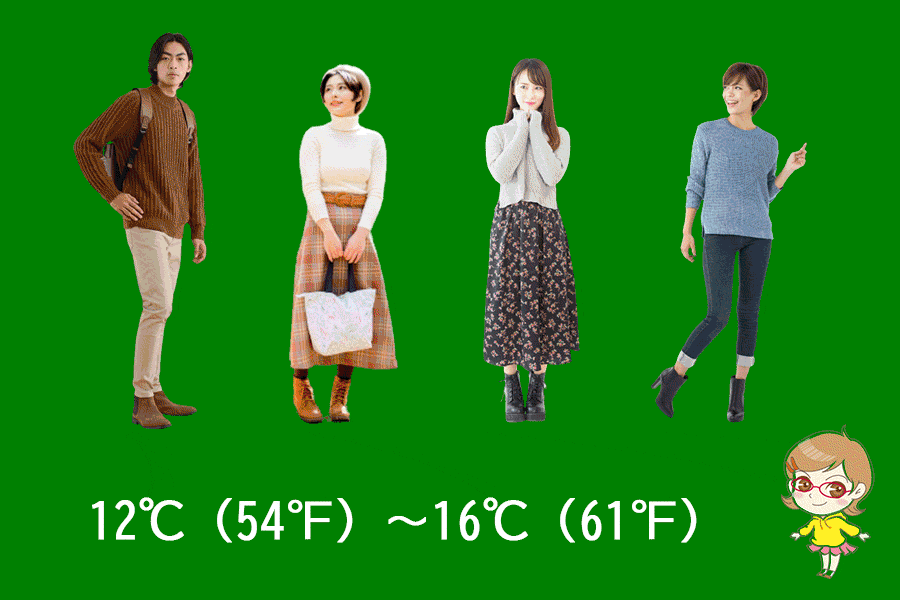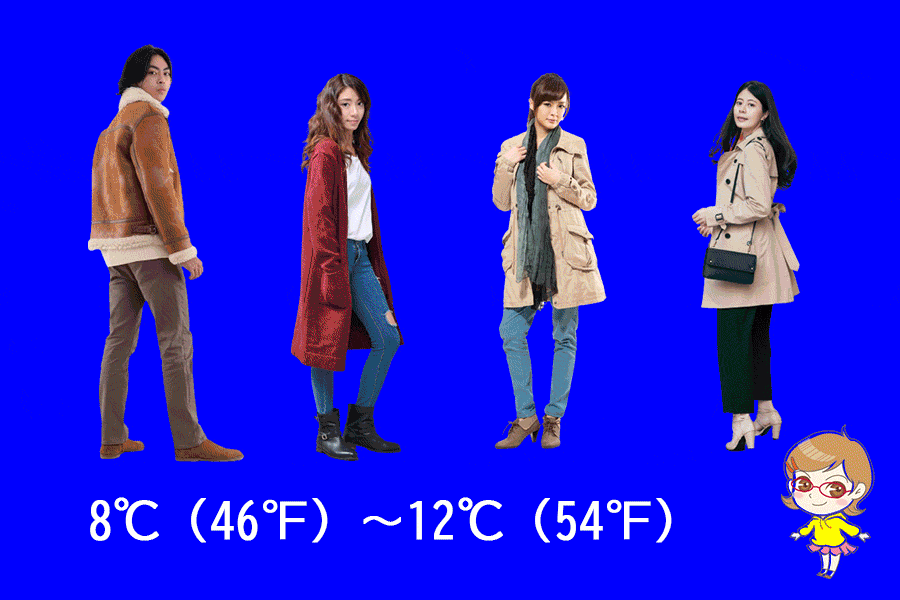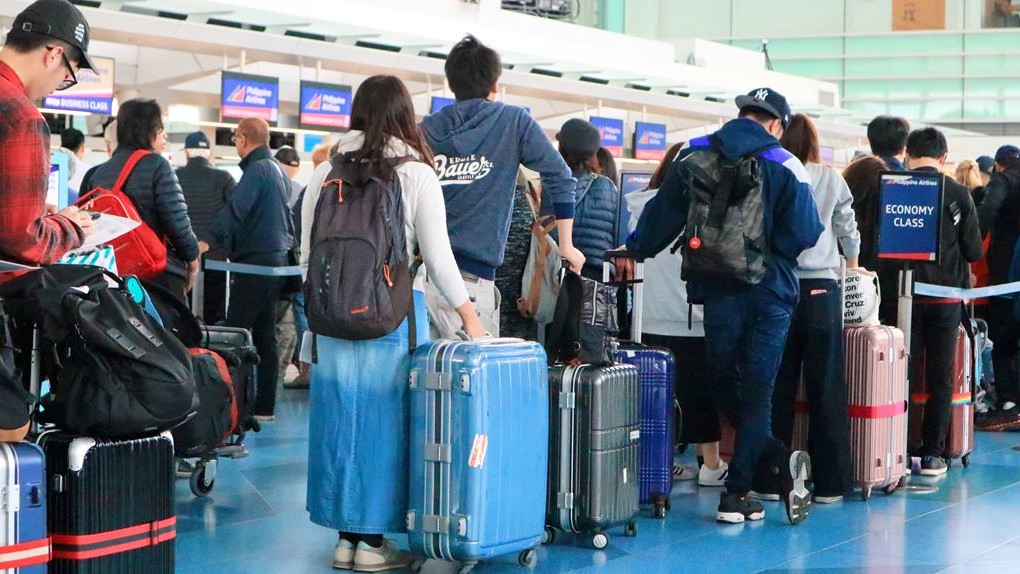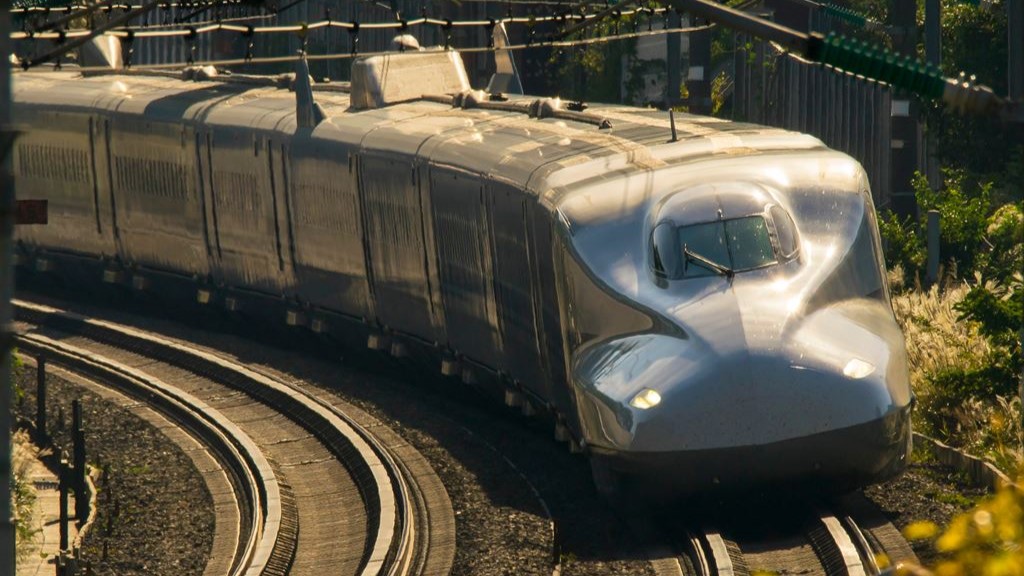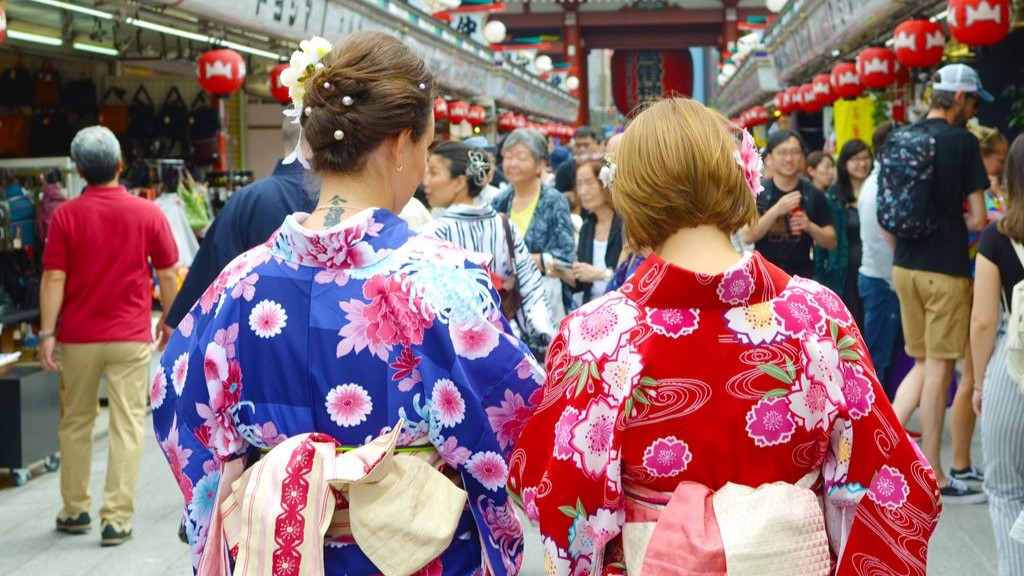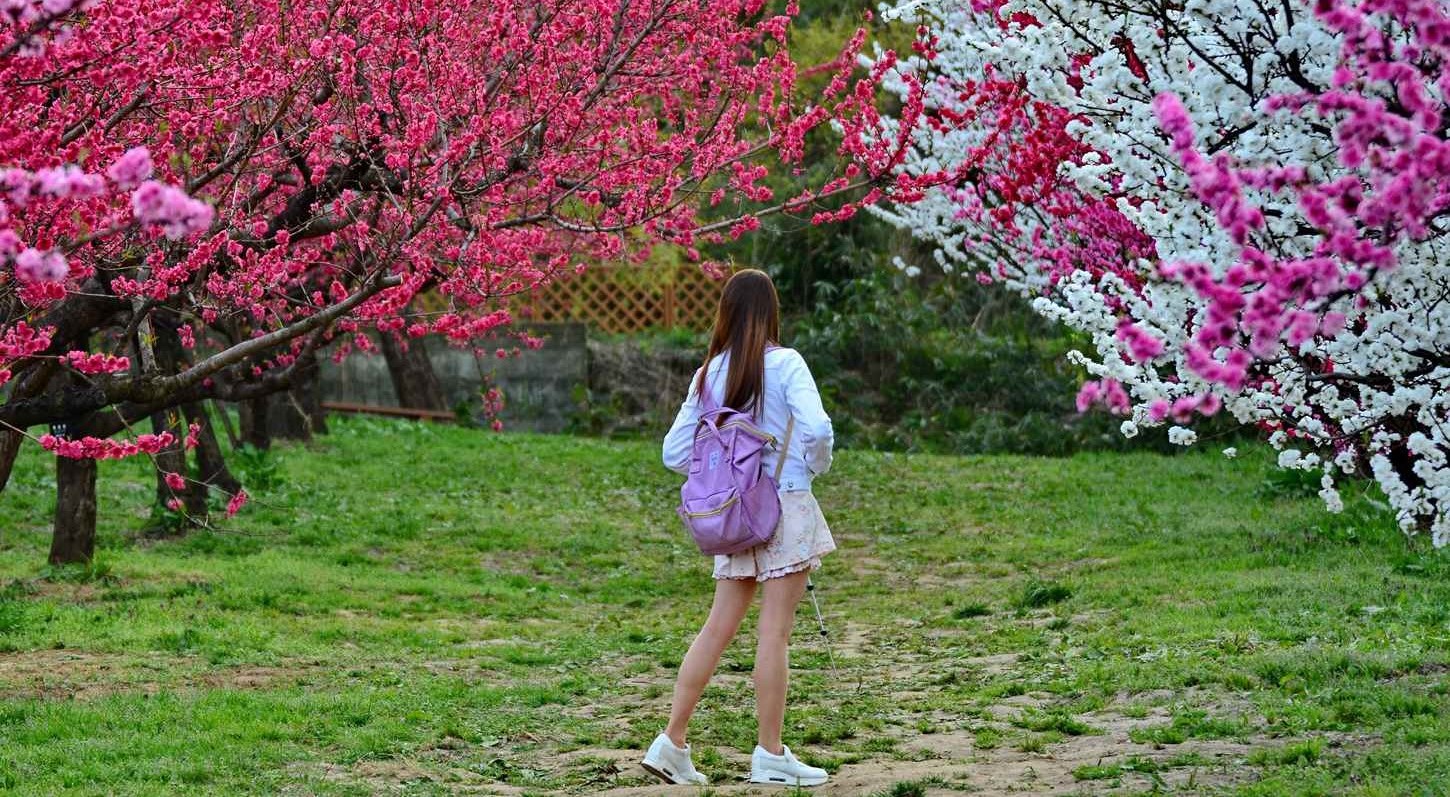1-1 Ekimotomachi, Kita Ward, Okayama, 700-0024 MAP
↓ Click to jump to the relevant section.
| Current Weather | Annual Weather | Tourist Attractions |
| Baggage Deposit | Hotels |
Current weather and clothing

The weather information shown here is the information closest to the station in question. Please note that there may be slight differences.
Yearly temperature changes and recommended clothing
Clothing recommendations for each temperature range
When traveling in Japan with the following average temperatures, the recommended clothing is as follows:
Monthly changes in temperature, precipitation, and snowfall (1991~2020 average, Japan Meteorological Agency survey)
| Jan. | Feb. | Mar. | Apr. | May | Jun. | Jul. | Aug. | Sep. | Oct. | Nov. | Dec. | |
| temperature(°C) | 4.6 | 5.2 | 8.7 | 14.1 | 19.1 | 22.7 | 27 | 28.1 | 23.9 | 18 | 11.6 | 6.6 |
| precipitation(mm) | 36.2 | 45.4 | 82.5 | 90 | 112.6 | 169.3 | 177.4 | 97.2 | 142.2 | 95.4 | 53.3 | 41.5 |
| snowfall(cm) | 0 | 1 | 0 | — | — | — | — | — | — | — | — | 0 |
Winter
December
The average temperature and average precipitation in Okayama Station in December are 6.6°C and 41.5 mm, respectively, with less precipitation and colder weather than in November. Warm clothing such as heavy coats, sweaters, long-sleeved shirts, pants, and boots are recommended for both men and women. Women may also want to wear a warm scarf and hat.
January
The average temperature in Okayama Station in January is 4.6°C. The weather is generally cold with the possibility of occasional snow and rain. It is recommended to wear warm and waterproof clothing to protect from the cold and wet conditions. Men and women should wear warm jackets or coats, scarves, gloves, hats, and waterproof shoes.
February
In February, the temperature is slightly higher than January, with an average temperature of 5.2°C. However, it is still cold with the possibility of snow and rain, so warm and waterproof clothing is still necessary. Men and women should wear warm jackets or coats, scarves, gloves, hats, and waterproof shoes.
Spring
March
March sees an increase in temperature with an average of 8.7°C, but the weather is still chilly, and occasional rain is expected. Wear warm and waterproof clothing, such as jackets or coats, scarves, gloves, hats, and waterproof shoes.
April
April is the beginning of spring in Okayama, with the weather starting to warm up. The average temperature in this month is 14.1°C, with some occasional showers. It is recommended to bring a light jacket or a sweater, especially during the evenings. For women, a light dress or a skirt paired with a blouse and a light jacket would be appropriate. Men can wear a shirt with pants or shorts.
May
May is a pleasant month with mild temperatures and low humidity. The average temperature is 19.1°C, and the chance of rain is relatively low. It is recommended to bring a light jacket or a sweater for the evenings, as the temperature can drop. Women can wear a light dress, a skirt, or pants with a blouse or a light sweater. Men can wear a shirt with pants or shorts.
Summer
June
In June, Okayama begins to experience early summer and temperatures begin to rise; the average temperature in June is 22.7°C, and humidity is high and rainfall is possible. Bring an umbrella and wear light, breathable clothing such as cotton or linen. Women should wear lightweight dresses, skirts, or pants with a blouse. Men should wear a shirt and shorts or lightweight pants.
July
July is one of the hottest months in Okayama, with an average temperature of 27°C (77°F). Although Okayama is an area with little rainfall, rainy days are relatively common in July. It is recommended to bring an umbrella, wear light, breathable clothing, and drink plenty of water. Women can wear light dresses or skirts, and men can wear T-shirts and shorts or light pants.
August
August is the hottest and most humid month in Okayama, with an average temperature of 28.1°C. Rainy days are also relatively common. It is recommended to bring an umbrella, wear light, breathable clothing and drink plenty of water. Lightweight dresses and skirts are recommended for women, and T-shirts and shorts or light pants for men.
Autumn
September
In September, Okayama begins to turn into early autumn and the temperature begins to drop, with the average temperature in September being 23.9°C. The chance of precipitation is relatively high for Okayama, a city with little rainfall. It is recommended to bring a light jacket or sweater for the evenings. Women should wear a light dress, skirt or pants with a blouse and a light jacket. Men can wear a shirt and pants or shorts.
October
The average temperature in Okayama Station in October is 18°C, with an average precipitation of 95.4 mm. The weather is cooler, and there is less rainfall than in September. Long-sleeved shirts, pants, and light jackets are recommended for both men and women. Women may also wear light sweaters or cardigans.
November
In November, the average temperature at Okayama Station is 11.6°C and the average precipitation is 53.3 mm, making it colder and less precipitation than in October. Sweaters, long-sleeved shirts, pants, and jackets are recommended for both men and women. Women may also want to wear a scarf.
Recommended tourist destinations
Okayama Korakuen Garden
Korakuen 1-5, Okayama 703-8257 Okayama Prefecture
This large garden was built by Tsunamasa Ikeda, the feudal lord of Okayama, as a place of relaxation for himself, and is renowned as one of the three best gardens in Japan. It has received a three-star rating in the Michelin Green Guide Japon. From September to February, visitors can get a close-up look at red-crowned cranes strolling through the park twice a month.
Okayama Castle
2-3-1 Marunouchi, Okayama 700-0823 Okayama Prefecture
The castle tower, a rare pentagonal structure with three stories and six floors, has a dignified appearance and is also known as “Karasu-jo” (crow castle) because of its black clapboard exterior. The top floor overlooks the Asahikawa River below and offers a 360-degree view of Okayama Korakuen Garden and the city.
Kibitsu Shrine
931 Kibitsu, Kita-ku, Okayama 701-1341 Okayama Prefecture
A historic shrine associated with the legend of Momotaro (an old Japanese tale). The present main hall was rebuilt in 1425. The beautiful 360-meter corridor leading from the main hall is a historical structure worth seeing. The “Narukama ritual,” in which good or bad luck is predicted by the sound of a kettle, is popular among many people.
Kibitsuhiko Shrine
1043 Ichinomiya, Okayama 701-1211 Okayama Prefecture
This shrine is dedicated to Kibitsuhiko-no-mikoto, the model for Momotaro. The traditional shrine architecture and deep green trees combine to create a solemn and splendid atmosphere. The main hall is designated as an important cultural property by the prefecture.
Kurashiki Bikan Historical Quarter
Hommachi, Kurashiki 710-0054 Okayama Prefecture
The Kurashiki Bikan Historical Quarter offers quaint scenery of white-walled warehouses and rows of willow trees. The streetscapes created by traditional buildings and the retro-modern scenery along the Kurashiki River continue to attract people from all over the world. The area is crowded with tourists all year round, with fashionable stores selling Kurashiki brands such as Kurashiki Canvas and Kurashiki Denim, as well as cafes in renovated machiya townhouses.
Ohara Museum of Art
1-1-15 Chuo, Kurashiki 710-8575 Okayama Prefecture
Founded in 1930, it was the first private western art museum in Japan. The museum exhibits many famous Western masterpieces, including “Annunciation” by El Greco, “Waterlilies” by Claude Monet, Renoir, and Gauguin. The museum also houses approximately 3,000 other works of art, including ancient Egyptian art, contemporary Western art, and modern and contemporary Japanese art.
Great Seto Bridge
Kojima , Kurashiki 711-0921 Okayama Prefecture
Opened in 1988, it is one of the Honshu-Shikoku bridges connecting Okayama and Kagawa prefectures. The bridge section is 9,368 m long, 13.1 km including the elevated section, and is one of the world’s largest double-layered bridges, spanning road and rail. The Seto Ohashi Bridge is illuminated mainly on weekends, creating an elegant and romantic atmosphere.The Seto-ohashi Bridge excursion boat leaves from Kojima Kanko Port.
Washuzan Observatory
Shimotsuitanoura, Kurashiki 711-0925 Okayama Prefecture
Washuzan, a representative scenic spot of Setonaikai National Park and a designated national scenic beauty spot. Washuzan Rest House and Washuzan Visitor Center. It is a popular viewing spot from which you can see the tranquil islands of the Seto Inland Sea, the magnificent Seto-ohashi Bridge, and even Shikoku Island on the opposite shore.
Where to leave your luggage
At Okayama Station, there are about 10 coin lockers located inside the station, at commercial facilities attached to the station, and in the station’s underground mall.
First, aim for the coin lockers on the east side of the Shinkansen ticket gate on the second floor of Okayama Station (to the left as you exit the ticket gate). If there are no lockers available, there is a “Okayama City Momotaro Tourist Center” near there, so please get information about other locations.
There is also a temporary baggage storage called “Nekonote Station” on the right side of the same Shinkansen ticket gate.
Recommended hotels and inns
Hotel Granvia Okayama
1-5 Ekimotomachi, Okayama 700-0024 Okayama Prefecture
2-minutes walk from Okayama Station
Hotel class: 4
Hotel style: Family , Great View
Check Rates & Availability:
>> See on Tripadvisor
>> See on Trip.com
>> See on Expedia
ANA Crowne Plaza Okayama, an IHG hotel
15-1 Ekimotomachi, Kita-ku Kita-Ku, Okayama 700-0024 Okayama Prefecture
4-minutes walk from Okayama Station
Hotel class: 4
Hotel style: City View , Modern
Check Rates & Availability:
>> See on Tripadvisor
>> See on Trip.com
>> See on Expedia
Okayama International Hotel
4-1-16 Kadota Hommachi, Naka-ku, Okayama 703-8274 Okayama Prefecture
2.0mi/3.2km from Okayama Station
Hotel class: 4
Hotel style: Family
Check Rates & Availability:
>> See on Tripadvisor
>> See on Trip.com
>> See on Expedia
Daiwa Roynet Hotel Okayama Ekimae
1-1-1 Ekimaecho, Okayama 700-0023 Okayama Prefecture
2-minutes walk from Okayama Station
Hotel class: 3
Hotel style: Centrally Located , Business
Check Rates & Availability:
>> See on Tripadvisor
>> See on Trip.com
>> See on Expedia
Via inn Okayama
1-25 Ekimotomachi, Kita-ku, Okayama 700-0024 Okayama Prefecture
2-minutes walk from Okayama Station
Hotel class: 3
Hotel style: Modern , Great View
Check Rates & Availability:
>> See on Tripadvisor
>> See on Trip.com
>> See on Expedia
Mitsui Garden Hotel Okayama
1-7 Ekimotomachi, Kita-ku, Okayama 700-0024 Okayama Prefecture
4-minutes walk from Okayama Station
Hotel class: 3
Hotel style: Quiet , Centrally Located
Check Rates & Availability:
>> See on Tripadvisor
>> See on Trip.com
>> See on Expedia
Hotel Abest Grande Okayama
1-8-5 Ekimaecho, Kita-Ku Icotnicot 6 to 7F, Okayama 700-0023 Okayama Prefecture
4-minutes walk from Okayama Station
Hotel class: 3
Hotel style: Family
Check Rates & Availability:
>> See on Tripadvisor
>> See on Trip.com
>> See on Expedia
Okayama Washington Hotel Plaza
3-6-201 Hommachi, Kita-ku, Okayama 700-0901 Okayama Prefecture
5-minutes walk from Okayama Station
Hotel class: 3
Hotel style: Centrally Located , Business
Check Rates & Availability:
>> See on Tripadvisor
>> See on Trip.com
>> See on Expedia
Okayama Koraku Hotel
5-1 Heiwacho, Kita-ku, Okayama 700-0827 Okayama Prefecture
6-minutes walk from Okayama Station
Hotel class: 3
Hotel style: Quiet , Centrally Located
Check Rates & Availability:
>> See on Tripadvisor
>> See on Trip.com
>> See on Expedia
The Onefive Okayama
1-1-13 Marunouchi, Kita-ku, Okayama 700-0823 Okayama Prefecture
14-minutes walk from Okayama Station
Hotel class: 3
Hotel style: Business
Check Rates & Availability:
>> See on Tripadvisor
>> See on Trip.com
>> See on Expedia
We support your itinerary planning!
Click the button to get an overview of hotel information and popular tourist routes from all over Japan featured on our site. We’ve included comprehensive details to aid in planning your trip, so please make use of it.
Comprehensive checklist before traveling to Japan
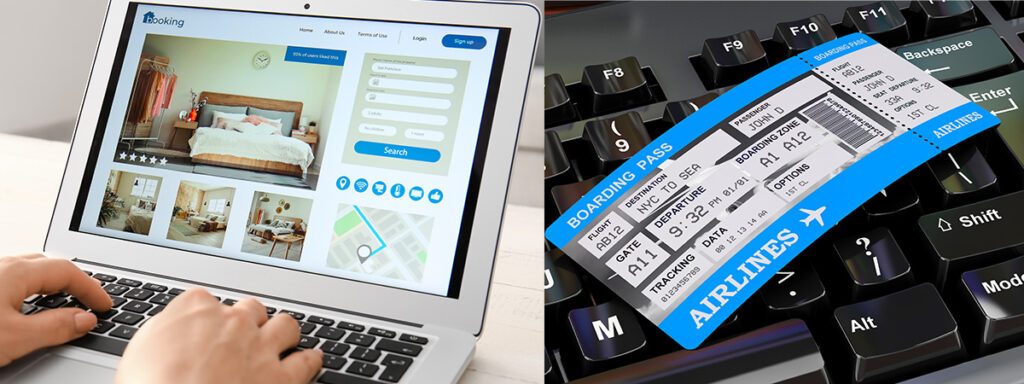
Book flights
Compare and purchase flight tickets
When planning your trip to Japan, it's advisable to start by researching flights several months in advance. Airlines often release promotional fares, especially during off-peak seasons. Use comparison sites like Skyscanner or KAYAK to get a sense of the price range. Be flexible with your travel dates if possible; flying mid-week might be cheaper than on weekends.
>> Visit Skyscanner's official website
>> Visit KAYAK's official website
Order Japan Rail Passes for each family member
Purchase your Japan Rail Pass before departure
The Japan Rail (JR) Pass offers unlimited travel on JR trains, making it a cost-effective option for tourists. However, it's only available to foreign tourists and must be purchased *before* you arrive in Japan. Determine the areas you plan to visit; if you're traveling extensively, a nationwide pass is beneficial, but if you're only exploring a specific region, consider regional JR passes. Children under 12 get a discounted pass, so ensure you order the correct type for each family member.
>>Visit Japan Rail Pass's website
Plan your attire for Japan
Check the weather at your destination on this site
Japanese weather varies significantly by season. In summer, it's hot and humid, so breathable clothes are essential. Winters, especially in the north, can be cold, requiring warm attire. If visiting during the rainy season (June to early July), pack a good umbrella and waterproof shoes. While Japan is generally casual, certain places like temples, shrines, or upscale restaurants may require modest and neat dressing.
Reserve a pocket Wi-Fi or SIM card
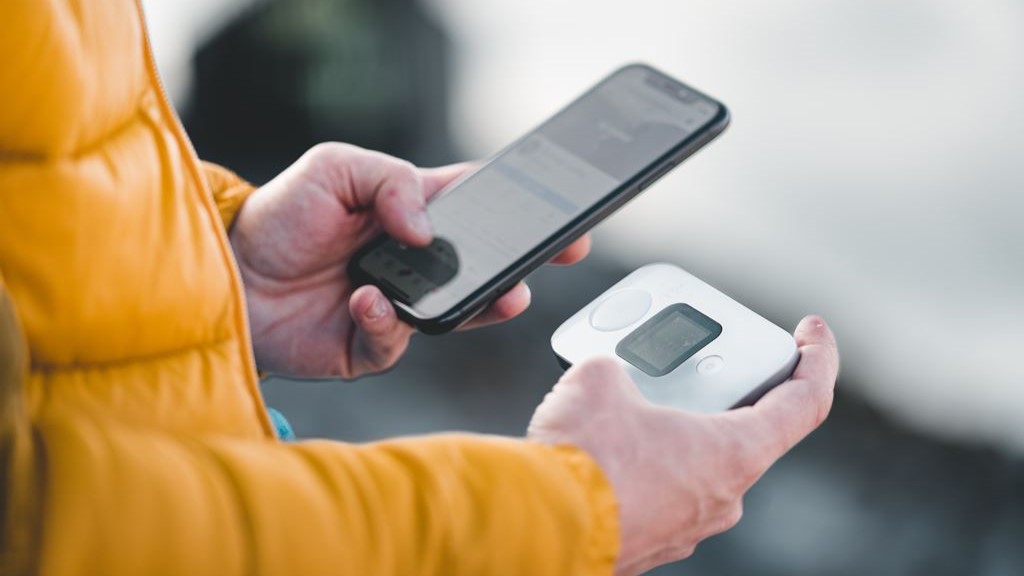
SIM card or pocket Wi-Fi is required
Beyond clothes, consider packing essentials like a universal power adapter (Japan uses Type A and B sockets), portable Wi-Fi or SIM card for internet access, and any necessary medications (with a copy of the prescription).
Which is better: a SIM card or pocket Wi-Fi?
When traveling in Japan, one essential to consider is securing internet access, especially given that many locations still don't offer free Wi-Fi. To ensure you can use your smartphone throughout your trip, you'll typically have three options: (1) a SIM card, (2) pocket Wi-Fi, or (3) the roaming service provided by your mobile company. Roaming services can be quite expensive, so we often recommend using a SIM card or pocket Wi-Fi. While SIM cards tend to be more affordable than pocket Wi-Fi, they can be trickier to set up. Pocket Wi-Fi, on the other hand, can be shared among several users, making it a favorable choice for families or groups.
▼SIM card
Advantages:
Relatively affordable.
Disadvantages:
Can be time-consuming to set up initially.
May have strict data limits.
▼Pocket Wi-Fi
Advantages:
Offers substantial data allowances.
A single device can be shared among multiple users.
Easily usable with PCs as well.
Disadvantages:
Typically more expensive.
Japan's representative services
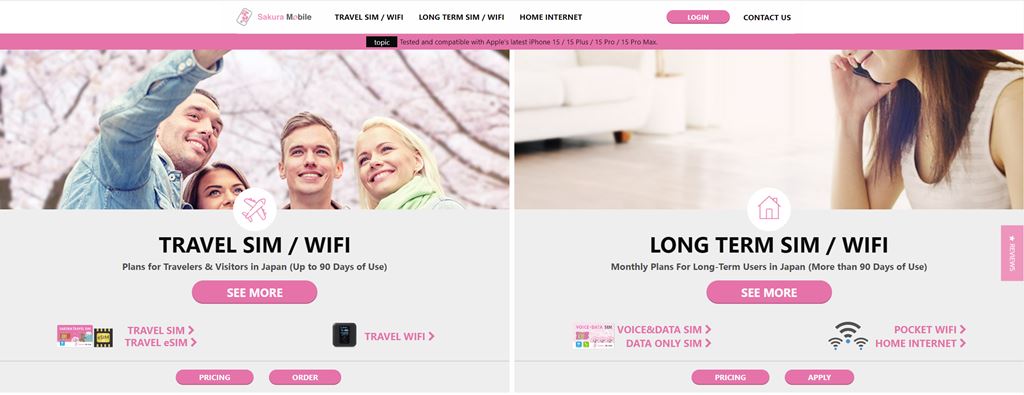
Sakura Mobile's website
▼SIM card
>>Visit Sakura Mobile's official website
>>Visit mobal's official website
▼pocket Wi-Fi
>>Visit Sakura Mobile's official website
>>Visit NINJA WiFi's official website
>>Visit Wi-Fi RENTAL Store's official website
Book local tours as needed
Pre-book your tour and have a great trip!
Local tours offer deep insights into Japan's culture and heritage. Websites like Viator or GetYourGuide offer a variety of tours, from traditional tea ceremonies to modern pop culture tours in Akihabara. Consider unique experiences like staying with monks on Mt. Koya or taking a cooking class to learn authentic Japanese dishes.
>>Visit Viator's official website
>>Visit GetYourGuide's official website
Purchase advance tickets for popular attractions
Make a reservation to avoid crowds
Attractions like Tokyo Disneyland, Universal Studios Japan, or the Studio Ghibli Museum often have long ticket queues. Buy tickets online in advance to save time. Some attractions also have timed entry, so check the specific time slots available and plan accordingly.
▼Tokyo Disney Resort
>>Visit Tokyo Disney Resort official website
>>Visit Viator's Tokyo Disneyland page
>>Visit Viator's Tokyo DisneySea page
>>Visit GetYourGuide's Tokyo Disneyland page
>>Visit GetYourGuide's Tokyo DisneySea page
▼Universal Studios Japan
>>Visit USJ official website
>>Visit Viator's USJ page
>>Visit GetYourGuide's USJ page
Buy travel insurance

insurance concept, health, life and travel insurance
It is important to be prepared for emergencies
While Japan is a safe country, travel insurance is crucial for unforeseen events like health emergencies, travel disruptions, or lost baggage. Ensure your policy covers medical expenses in Japan, as healthcare, though excellent, can be expensive.
Here we introduce online travel insurance services that are popular worldwide.
World Nomads: An online travel insurance service widely endorsed by travelers worldwide. They offer plans that cover adventurous activities and high-risk sports.
>>Visit World Nomads' official website
AIG Travel Guard: An insurance service available to travelers all over the world. They offer a wide range of options, including cancellation protection and emergency medical insurance.
>>Visit AIG Travel Guard's official website
Share your itinerary with emergency contacts
Organize your reservation information
Keep a digital and printed copy of your detailed itinerary, including hotel addresses, train schedules, and booked tours. Share this with a trusted family member or friend not traveling with you.

